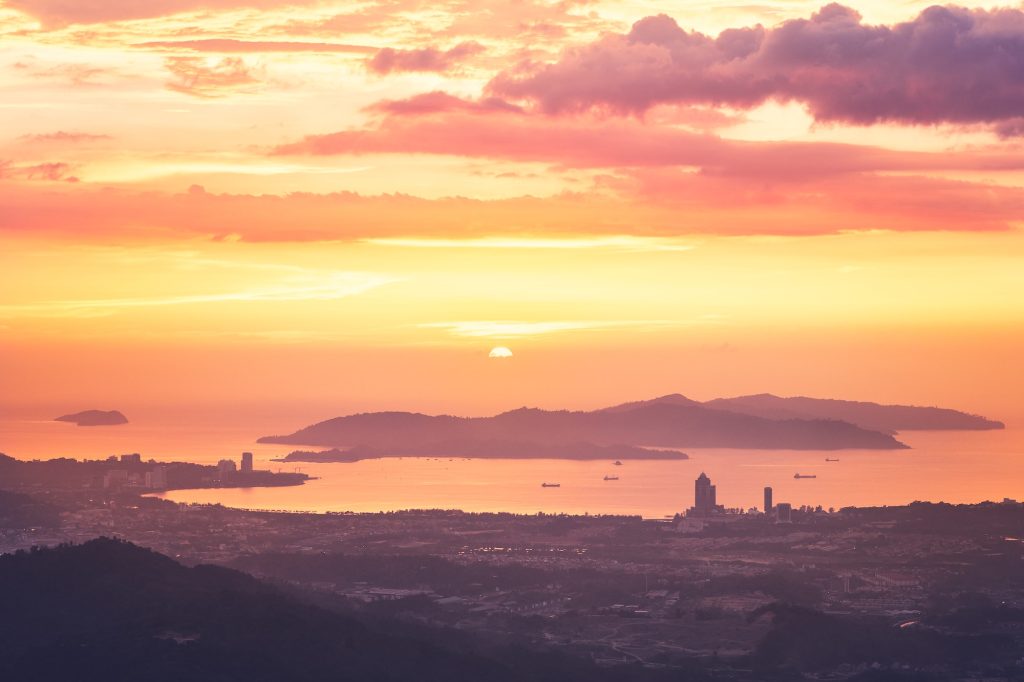I wouldn’t begin to deny that the view from the top of Malaysia’s Mount Kinabalu at sunrise is impressive. What I would say is that scrabbling up there in the cold and wet pre-dawn darkness is not my idea of fun.
Mount Kinabalu is among the best known attractions in Borneo. Reaching 4,095m above sea level, it is one of the tallest mountains in Southeast Asia, and is popular partly for the speed with which the summit can be reached. Walkers set off in the morning from the park headquarters at 1,563m, spend the night at a guest house at 3,300m, then get up early to reach the summit by dawn. Reasonably fit walkers can make it back down for lunch.
The first day had me questioning whether I could be considered “reasonably fit.” It proved to be a rainy and relentless five-hour grind uphill, mostly through jungle with little in the way of views and often on steps made from wood or carved into the rock. Thankfully, there were shelters along the well-marked trail for those who needed a rest.
With four distinct climatic zones, this is one of the most diverse natural environments in the world, boasting 1,200 species of orchid as well as large carnivorous pitcher plants. There are also 326 species of birds and 100 species of mammals. Unfortunately, walkers scare away most of the animalsfrom the Summit Trail, with the quieter and longer Mesilau Route to the top considered better for nature lovers.
The nearest I got to a wildlife sighting was a couple of squirrels and a rat. My compulsory local guide pointed out a few flowers but little else, and I would highly recommend the Sabah Tourism Board leaflet,
“The Kinabalu Park,” if you want to understand the changes in vegetation along the route. Finally, the scenery turned up at its best an hour before we reached the rest houses at Laban Rata; the views down the valley buoyed my spirits. Accommodation proved to be pretty basic considering that it was expensive and had no hot water left for showers by the time I arrived. In retrospect I should have stayed the night close to the headquarters and made an earlier start.
The next day we were up at 3 a.m. for the three-to-four-hour climb to the summit by torchlight. It had started to rain the night before and had not stopped since. The result was a long trudge up slippery rocks, with the help of fixed ropes. I found it best not to think about the steep drops that waited in the darkness.
The final section, across an open expanse of granite, seemed never to end, and I came close to giving up within sight of the summit. It was freezing cold at the top but at least the rain stopped just in time for dawn. And tired as I was, I had to admit that it was impressive: the horizon took on a brilliant orange hue while the walkers on the vast slopes below looked tiny and insignificant.
I took photographs, felt a brief flush of accomplishment,and then made my way down. It would be a tiring two-hour descent before breakfast, then another four hours to the headquarters.
Back in Kota Kinabalu, I winced every time I stepped up a curb for the next few days. It was sobering to recall that competitors in the annual Mount Kinabalu International Climbathon can get up and down the mountainin as little as two and a half hours. They probably complain far less than me, too.
The People of Kinabalu
Most people living around Mount Kinabalu are Kadazandusun, members of Sabah’s largest ethnic community. They consider the mountain to be the resting place of their ancestors’ spirits, appeasing them with annual sacrifices of chicken and other foodstuffs close to Laban Rata.







